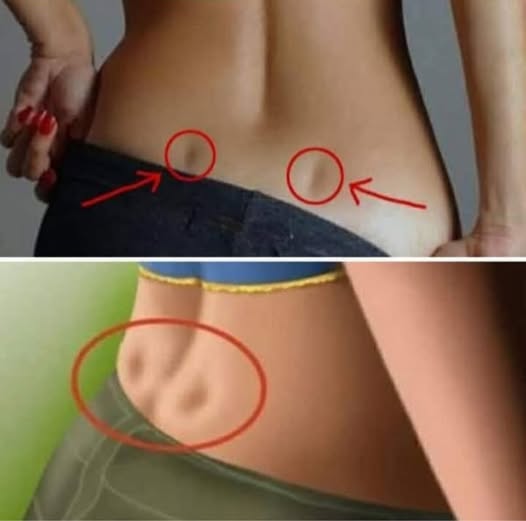Do You Have Two Dimples on Your Lower Back? Here’s What They Could Mean
Our bodies are full of unique characteristics that make each person different. Some of these features are easy to notice, like eye color or height, while others are subtle and often overlooked. One such detail is the presence of two small dimples on the lower back, located just above the buttocks.
These tiny indentations are often called “dimples of Venus” in women and “dimples of Apollo” in men. For centuries, they’ve been associated with beauty, balance, and even health. But what exactly are they, and why do some people have them while others don’t?
What Are Lower Back Dimples?
Lower back dimples are naturally occurring indentations that appear where the pelvic bones meet the spine. They are not scars, marks, or anything developed later in life—they are purely genetic. This means you either have them or you don’t, regardless of how much you exercise or what your lifestyle is like.
In medical terms, these dimples are formed because a ligament connects the skin to the bone in that area. Since there isn’t much muscle or fat covering the connection point, the skin creates a slight inward dip. This is why the dimples are more visible in some people, especially those with lower body fat percentages.
Why Are They Called “Venus” or “Apollo” Dimples?
The names come from mythology. In women, the dimples are named after Venus, the Roman goddess of beauty and love, symbolizing attractiveness and harmony. In men, they are often referred to as Apollo dimples, named after the god of strength and light.
Across cultures, these dimples have long been seen as aesthetically pleasing. They’re sometimes thought of as a sign of physical symmetry, which historically has been linked to beauty and good health.
What Do They Mean for Your Body?
While they may look like just a cosmetic feature, many people have wondered if lower back dimples hold a deeper meaning. Here are a few common associations:
- Genetics, not lifestyle – The biggest factor is genetics. Unlike muscle tone or body shape, dimples cannot be “earned” through diet or exercise.
- Healthy circulation – Some experts believe that the position of these dimples corresponds with areas of good blood flow in the pelvic region. While this is more of a traditional belief than a medical fact, it has added to the reputation of Venus dimples as a sign of vitality.
- Weight and body composition – People with lower body fat may show the dimples more prominently, but having them doesn’t necessarily mean you’re underweight or overweight—it’s simply about how your body is structured.
- Aesthetic appeal – Perhaps the most common association is with attractiveness. Many see these dimples as a natural beauty mark, much like dimples on the cheeks.
Can You Develop Them?
A common question is whether it’s possible to “get” Venus or Apollo dimples through fitness or weight loss. The answer is no—they are not something you can create. Since they are determined by bone structure and skin attachment, they either appear naturally or they don’t.
That said, maintaining a healthy lifestyle may make them more visible if you already have them. For example, lower body fat can make the indentations more pronounced, while higher fat may make them less noticeable.
Symbolism and Modern Views
In the modern world, back dimples are sometimes highlighted in fitness, modeling, and fashion photography. They are considered a sign of youthfulness, symmetry, and confidence.
Some cultures even believe that Venus dimples are connected to good fortune, passion, or strong energy, though these are symbolic interpretations rather than scientific facts.
Whether or not you believe in the symbolism, one thing is clear: these dimples are a completely natural and harmless feature of the human body.
Final Thoughts
If you have these small dimples on your lower back, you are part of a unique group of people whose bone structure creates this natural trait. They don’t guarantee anything about health, weight, or lifestyle—but they have long been admired as a subtle sign of beauty and individuality.
So the next time you notice them in the mirror, remember: they’re not just small indentations—they’re a distinctive feature that connects you to centuries of history, mythology, and appreciation for the little details that make us who we are.




